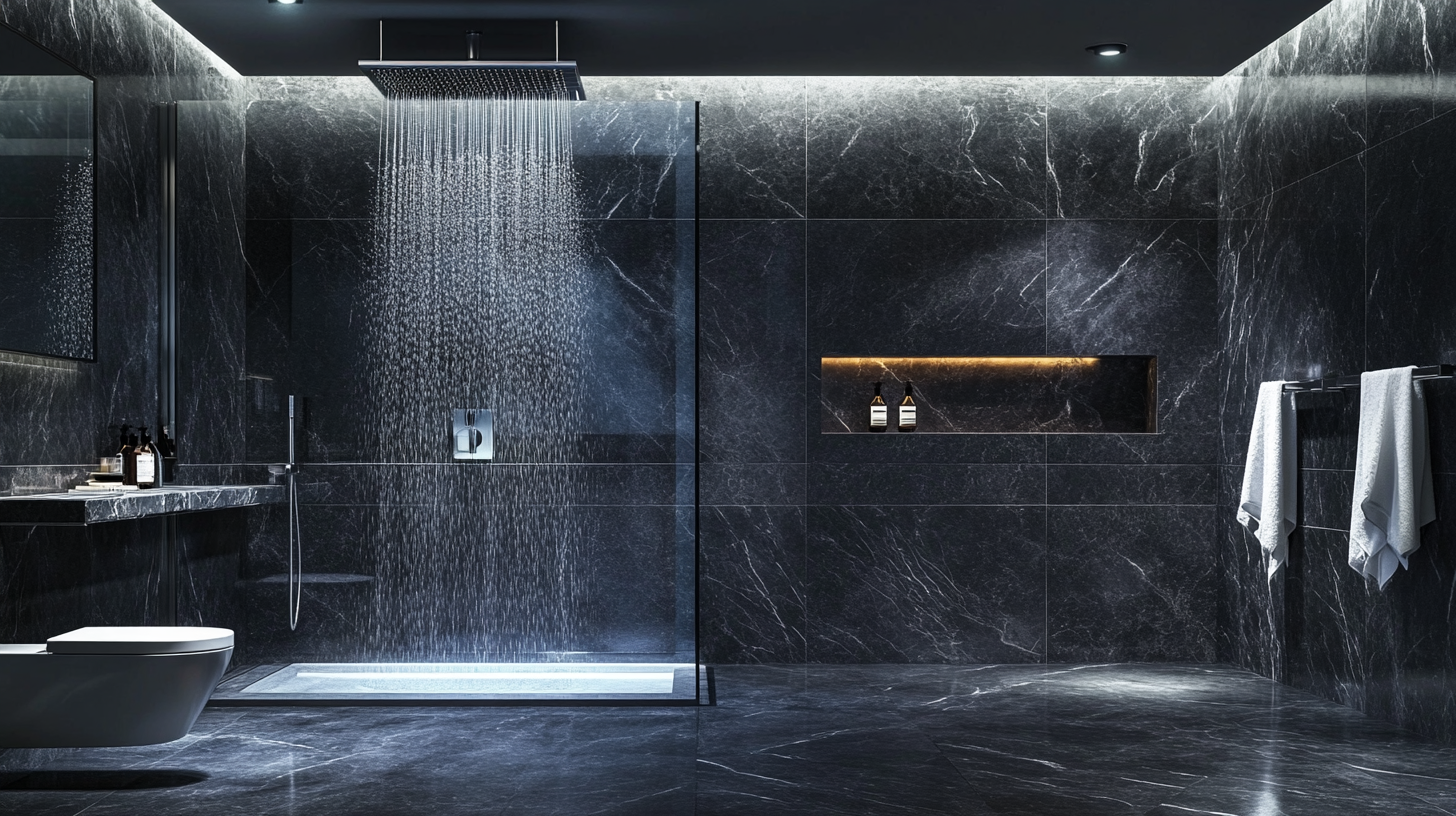
China Manufacturing Thrives Amidst Rising Tariffs on Best Bathroom Shower Head Products
In recent years, the global market for bathroom shower heads has experienced noteworthy shifts, particularly in light of escalating tariffs between the United States and China. According to a report by IBISWorld, the bathroom fixture manufacturing industry in China has seen a compound annual growth rate (CAGR) of approximately 6.3% over the past five years, reflecting its resilience despite challenging trade dynamics. As U.S. tariffs on imported goods, including bathroom shower heads, have risen, Chinese manufacturers have adeptly pivoted to maintain their market position. This strategic adaptability is credited with not only sustaining production levels but also expanding exports to alternative markets. With the global shower head market projected to reach $15 billion by 2025, China's ability to innovate and compete effectively in this sector illustrates the complexities of international trade and manufacturing amidst changing economic landscapes.

Impact of Tariffs on U.S.-China Trade Relations in the Shower Head Market
As tariffs on imported bathroom shower head products rise, the dynamics of U.S.-China trade relations have become increasingly complex. American manufacturers are facing higher costs for imports, which not only impacts pricing for consumers but also reshapes competitive strategies within the market. In response to these tariffs, many U.S. companies are pivoting towards domestic production, aiming to mitigate the risks associated with dependency on foreign supplies. This shift highlights a growing trend in the manufacturing landscape, where efficiency and localized production are becoming key priorities.
Meanwhile, China’s manufacturing sector continues to thrive despite the tariffs. The country has adapted by innovating its product offerings and improving manufacturing processes to maintain competitiveness in the global market. This resilience allows Chinese manufacturers to find alternative export opportunities beyond the U.S., and they are increasingly targeting emerging markets that do not impose similar trade barriers. As a result, the ongoing trade tensions are forcing both nations to reassess their roles in the shower head supply chain, creating a complex interplay of adaptation and strategy that defines the industry today.

The Resilience of China's Manufacturing Sector: Growth Statistics in 2023
The manufacturing sector in China has demonstrated remarkable resilience in 2023, even in the face of rising tariffs on bathroom shower head products. Recent growth statistics indicate a steady increase in production output, highlighting the sector's ability to adapt to external pressures. With innovative practices and a strong domestic market, Chinese manufacturers have effectively navigated the challenges posed by global trade dynamics.
To thrive in this evolving landscape, companies should consider a few strategic tips. First, leveraging advanced technologies such as automation and artificial intelligence can enhance production efficiency and reduce costs. Second, focusing on product innovation will not only meet consumer demands but also create a competitive edge in an increasingly saturated market. Lastly, strengthening supply chain partnerships can help businesses maintain flexibility and responsiveness amid fluctuating tariffs and trade policies.
As the manufacturing industry continues to flourish, understanding these growth factors and implementing strategic initiatives can lead to sustainable success. By adapting to changing market conditions and embracing forward-thinking practices, manufacturers can ensure their place in the global economy.
China Manufacturing Sector Growth in 2023
Comparative Analysis: U.S. vs China Shower Head Production Costs & Pricing
As global trade tensions escalate, the manufacturing landscape for bathroom shower heads has shifted significantly. A comparative analysis between U.S. and Chinese production costs reveals a striking difference, primarily driven by labor expenses, material sourcing, and operational efficiencies. In the U.S., manufacturers face higher labor costs due to minimum wage laws and benefits, which inherently raise the overall production expenses. Additionally, American companies often incur costs related to stricter environmental regulations, influencing the final retail price of their products.
In contrast, Chinese manufacturers benefit from lower labor costs and economies of scale. The vast network of suppliers in China enables quicker access to necessary materials, reducing lead times and costs. Furthermore, the streamlined logistics and transportation systems bolster competitive pricing for Chinese-made shower heads. With rising tariffs on imports, U.S. consumers may increasingly find themselves paying a premium for local products while potentially compromising on price and selection. This analysis illustrates the complex interplay of tariffs, production costs, and market dynamics, paving the way for a deeper understanding of the industry amid changing global trade policies.
Shifting Consumer Preferences: Trends in Bathroom Accessories Amid Tariffs
Amid the rising tariffs on bathroom accessories, consumer preferences are shifting significantly, influencing the landscape of the market. With an increasing focus on quality and sustainability, many consumers are gravitating towards premium bathroom products that not only enhance the aesthetic appeal of their spaces but also offer better durability. This trend is particularly pronounced in products such as shower heads, where consumers are willing to invest in innovative designs that integrate water-saving features and advanced technology.
The dynamics of consumer behavior are also reflected in the broader market trends. For instance, the global cotton towel market, valued at approximately USD 4.48 billion in 2024, is projected to grow to USD 7.24 billion by 2030. This growth is fueled by a rising demand for microfiber and eco-friendly options, mirroring the increased consumer awareness regarding sustainable living. Similarly, the FMCG sector indicates a shift towards items that combine affordability with functionality, thus enabling brands to capture the attention of value-conscious consumers. As the bathroom accessories market evolves, understanding these trends is crucial for manufacturers aiming to thrive amidst the challenges posed by tariffs.
China Manufacturing Thrives Amidst Rising Tariffs on Best Bathroom Shower Head Products
| Product Category | 2022 Sales ($ Billion) | 2023 Sales ($ Billion) | Projected Growth (%) | Consumer Preferences |
|---|---|---|---|---|
| Luxury Shower Heads | 1.5 | 2.0 | 33.33% | High Quality, Design |
| Eco-Friendly Shower Heads | 0.8 | 1.3 | 62.50% | Water Conservation, Sustainability |
| Handheld Shower Heads | 1.0 | 1.2 | 20.00% | Versatility, Ease of Use |
| Smart Shower Systems | 0.5 | 1.0 | 100.00% | Technology, Customization |
| Traditional Shower Heads | 2.0 | 1.5 | -25.00% | Affordability, Simplicity |
Future Projections: Market Opportunities for Chinese Shower Head Manufacturers
The bathroom fixtures market is experiencing dynamic shifts, particularly for shower heads, as Chinese manufacturers seize new opportunities amidst rising tariffs on competing products. According to a report by ResearchAndMarkets, the global shower head market was valued at approximately $2.5 billion in 2022 and is projected to reach $4.02 billion by 2028, growing at a CAGR of 8.2%. As tariffs create price barriers for imported goods, Chinese manufacturers stand to benefit from increased demand for affordable and diverse product offerings.
Moreover, as sustainability becomes a significant consumer concern, Chinese shower head manufacturers are innovating with eco-friendly designs. The same report indicates that water-efficient shower heads are gaining traction, expected to account for about 35% of the market by 2025. This aligns with the government's push for water conservation measures, offering Chinese firms not only a chance to expand their market share domestically but also to penetrate international markets where eco-conscious products are increasingly favored. By prioritizing innovation and cost-effectiveness, Chinese manufacturers are well-positioned to capture the growing demand for quality shower head products in a competitive landscape.




